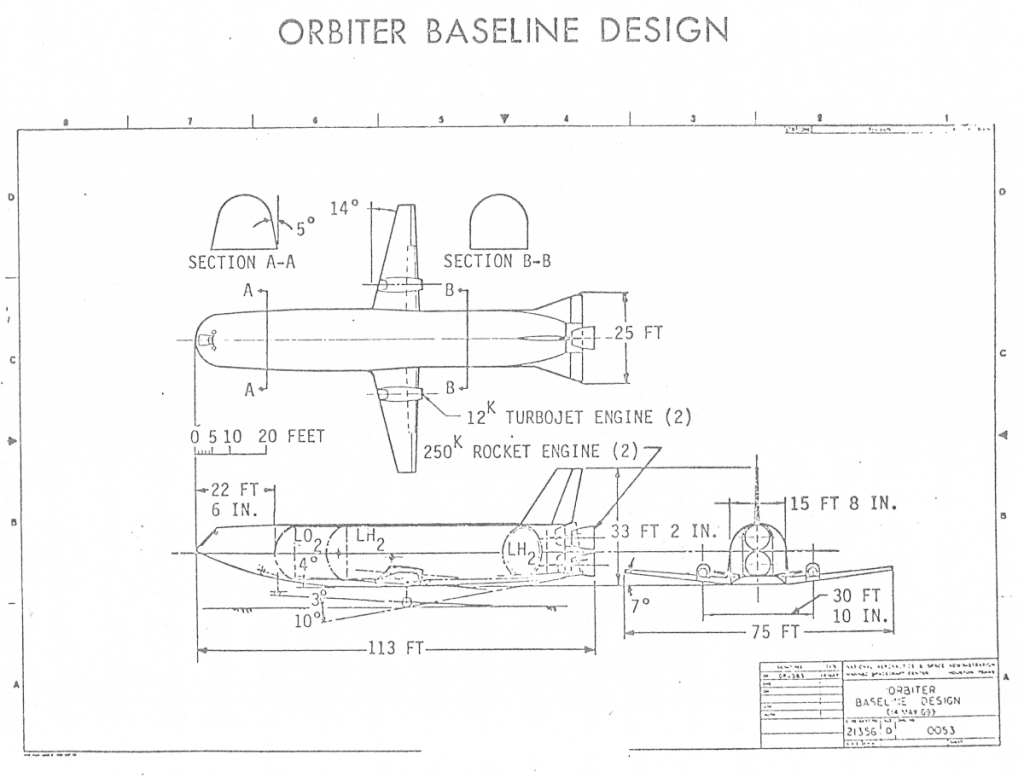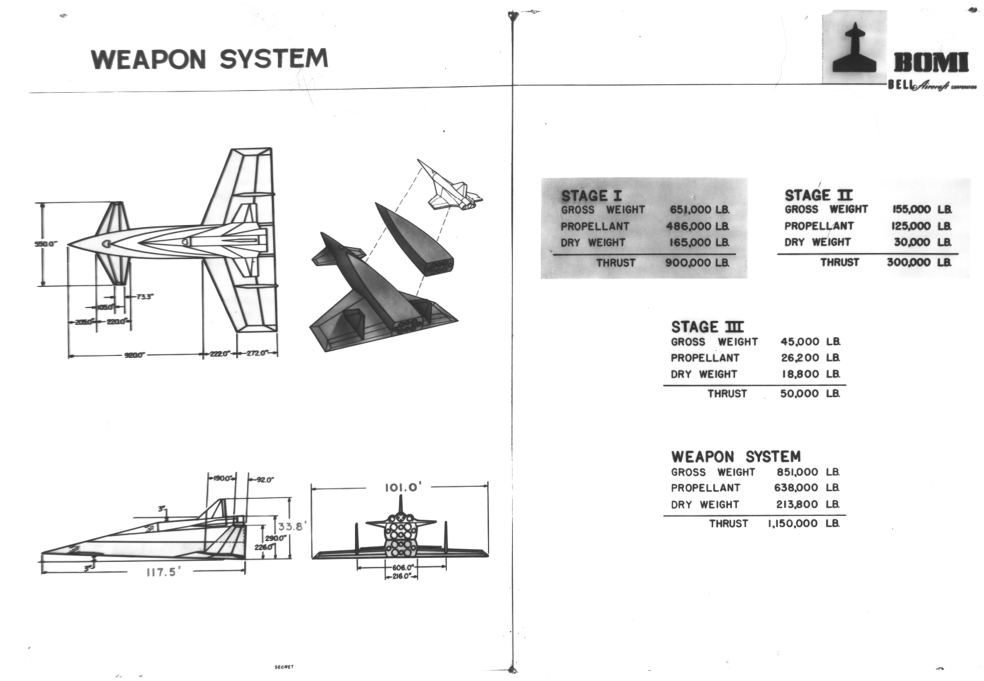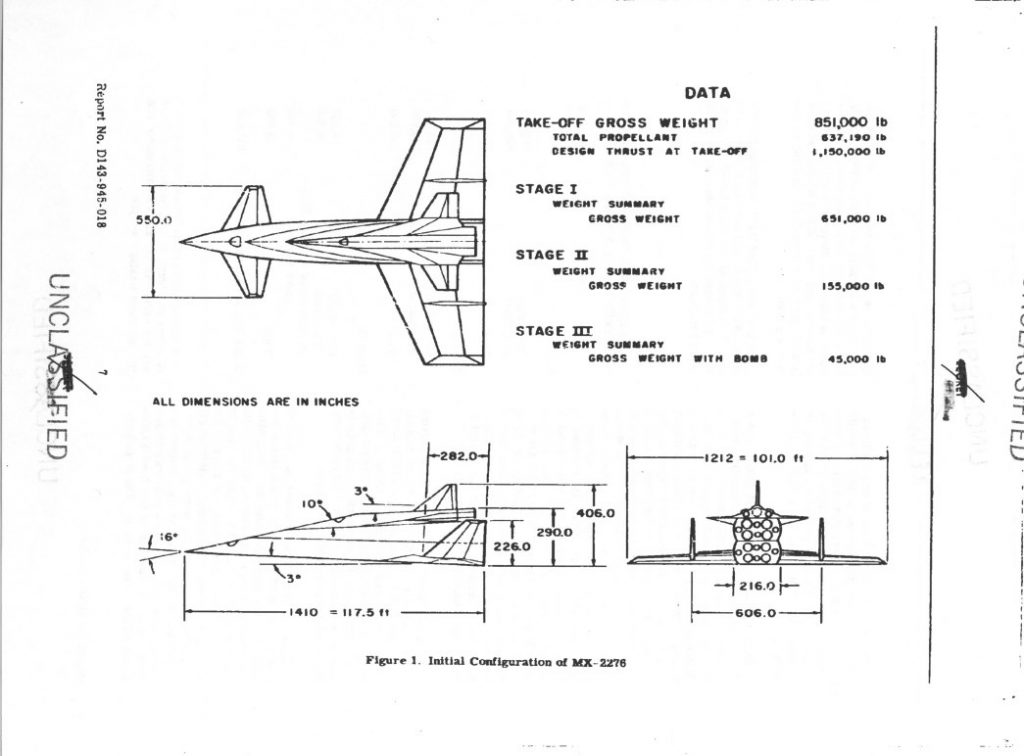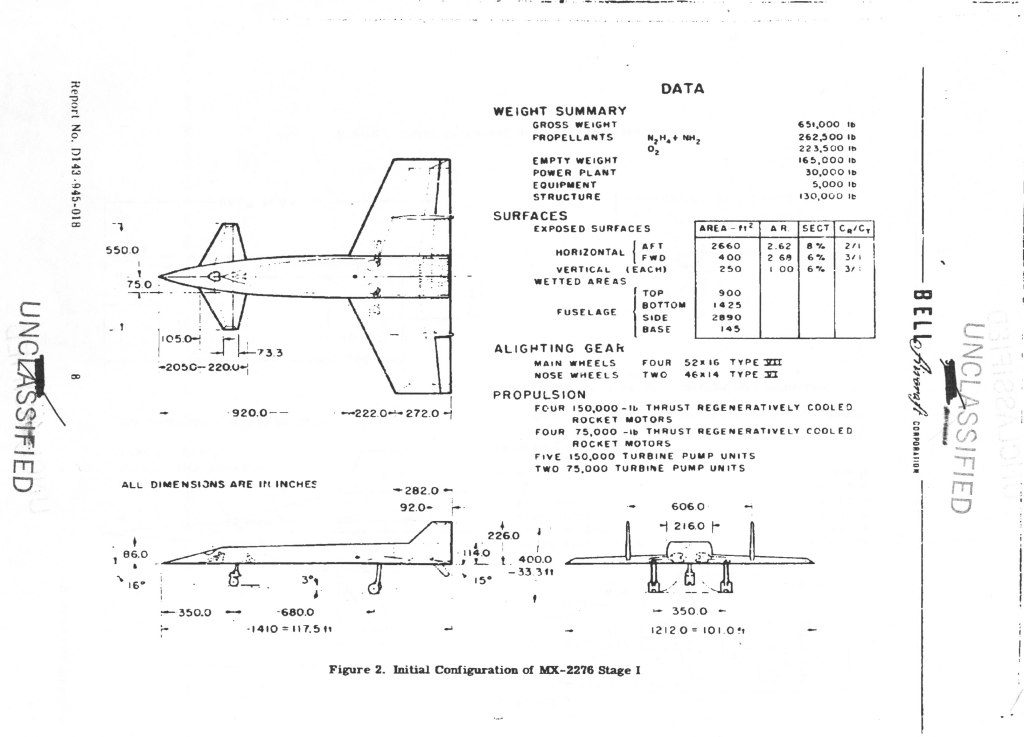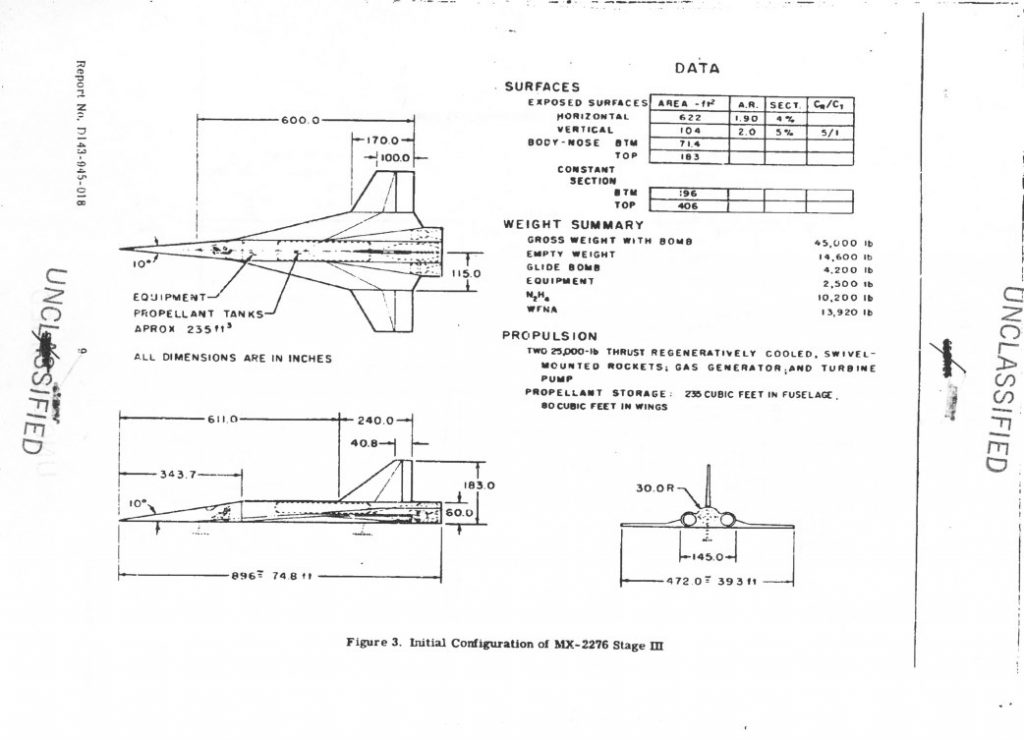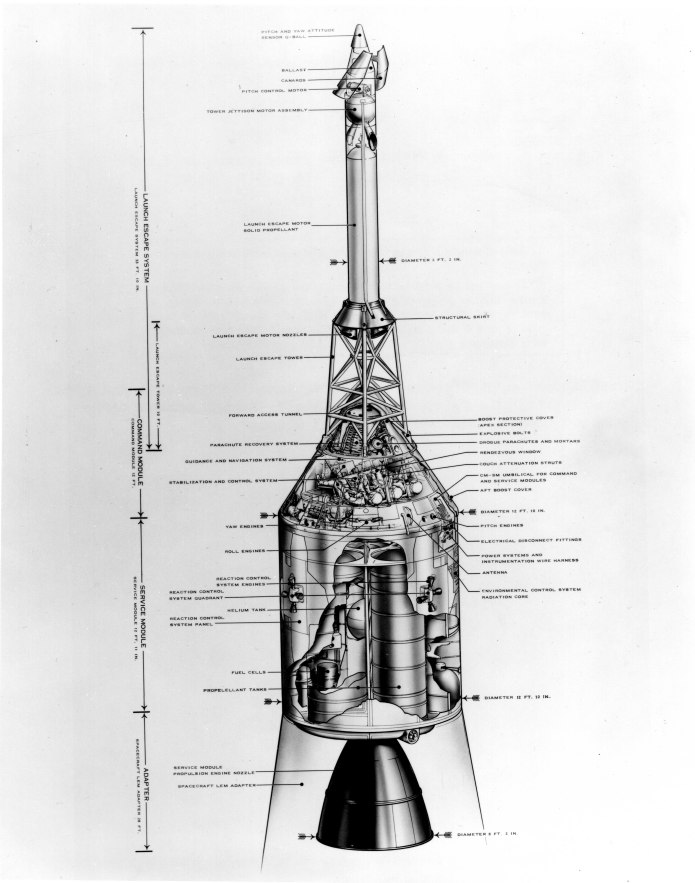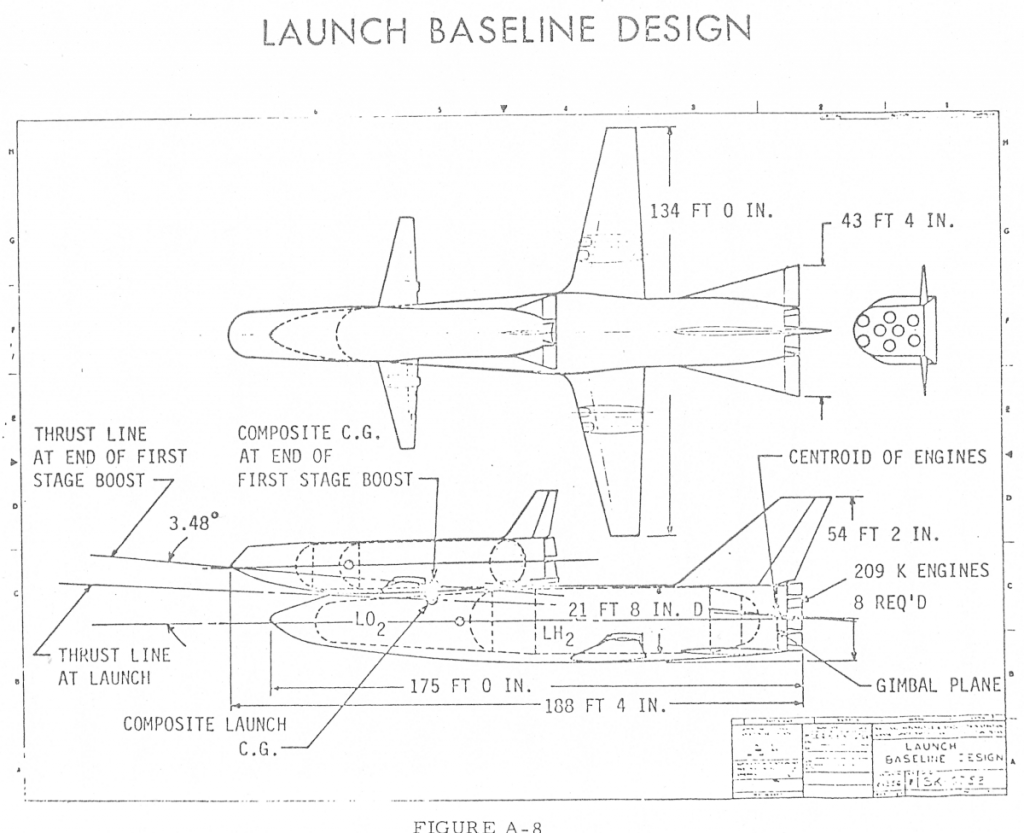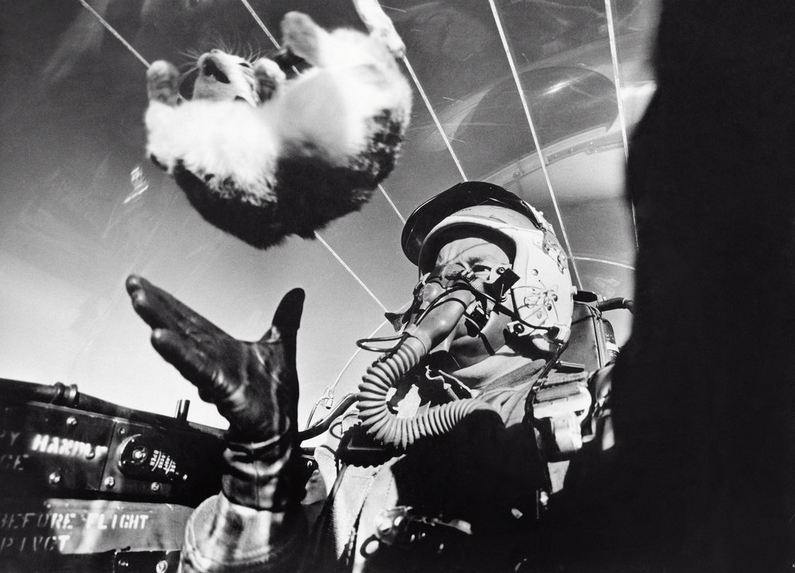The orbiter for the “DC-3” referenced previously. This vehicle had relatively small wings, leading to quite low crossrange. The wings were also simple straight wings, not highly swept deltas; the vehicle could get away with this because it did not “glide” during re-entry, but “belly flopped.” To aid in crossrange and landing, each wing would have a single turbofan in a sealed pod. The payload bay is not shown here, but would be quite small and right behind the cockpit.
An interesting read:
When it Comes to Missiles, Don’t Copy Russia and China — Leapfrog Them
The idea put forth is to build booster rockets akin to but somewhat smaller than the Falcon 9, optimized to launch, land, refurb, reload and relaunch quickly. Put an upper stage on them (called a “bus” in the article, for reasons clear to anyone who knows anything about ICBMs), and then load the bus with weapons. The author suggest scramjet-powered cruise missiles. When the Chinese start lobbing intermediate range ballistic missiles at American and allied targets around the western Pacific, start lobbing weapons at *them* not from ships at sea, but form bases in the United States. The boosters get the bus to hypersonic speeds… and then they return for reloading and relaunch.
Done correctly, the expense should be that of the weapons themselves, the bus, and the propellant for the booster. Thus the weapons lobbed all the way across the Pacific *should* be cheaper than the weapons lobbed just from China to, say, Guam. The United States should be able to rain down a seemingly unending hail of weapons onto Chinese military targets.
Before the Convair Atlas ICBM proved that it was possible for a rocket to reach out across the world and deposit some canned sunlight reliably close to commie targets, it was understood that the only way to accomplish the task was with pilots and bombardiers. But by the mid 1950’s the idea of subsonic manned bombers sneaking into the heart of the Soviet Union without getting swatted was starting to seem nonsensical. So Bell Aircraft, under the direction of former V-2 program director Walter Dornberger, dreamed up the MX-2276: a three-stage manned rocket bomber. Looking akin to an evolved Sanger Antipodal Bomber, the MX-2276 used two manned and winged stages, with an unmanned expendable stage in between. The final stage would carry a single gliding nuclear warhead deep into the USSR, using the human crew to attain some measure of accuracy.
But then the Atlas came along and ruined all that.
The idea persisted, however, turning first into the Bomber Missile (BoMi) then the Rocket Bomber (RoBo) then Dyna Soar. With each step it became less fantastical, and also less of a dedicated weapon system; by the end of the Dyna Soar, it was a one-man experimental re-entry vehicle launched by a fully expendable Titan IIIC. Since then the idea of a “rocket bomber” has popped up from time to time, but never with the level of seriousness displayed in the mid/late 1950’s. For more on the whole BoMi program, see Aerospace projects Review issues V2N2, V2N3 and V2N4. APR issue V3N4 gives a pretty complete rundown of the final Model 2050E Dyna Soar.
Just in from ebay, a vintage black & white cutaway illustration of the Apollo CSM. The original has been scanned at 600 dpi (it’s clear enough for that high of a resolution) and made available to subscribers of the APR Patreon and the Monthly Historical Documents Program at above $10/month as an “extra.”
If this sort of thing is of interest, sign up either for the APR Patreon or the APR Monthly Historical Documents Program.
In 1969, Maxime Faget of NASA-Manned Spacecraft Center (later renamed Johnson Space Center) produced a concept for a simplified version of the Space Shuttles then being designed. The idea at the time was that the Shuttle would be a two-stage vehicle, both being fully reusable manned flyback vehicles. The Orbiter would be much larger than the Orbiter that actually got built because it included substantial hydrogen/oxygen tankage. The boosters were generally *vast* vehicles larger than the C-5 Galaxy meant to fly higher and faster than the X-15. Optimistic to be sure. Faget’s “DC-3” design had the same basic architecture but attempted to produce a smaller, cheaper, less complex and more realistic design. The design, produced in-house at NASA, was picked up by both North American and McDonnell Douglas, who designed their own variations on the theme.
Here is the basic configuration of the NASA-MSC “DC-3:”
A photo montage of Boeing display models showing a range of launch vehicles intended to put the early (1959) Dyna Soar into orbit. The three at left are clusters of Minuteman ICBM boosters; the next two are larger solid rocket motor clusters. The next is a Saturn I booster, followed by an all-new recoverable liquid rocket booster, the Titan II and the Atlas/Centaur. The Titan II design was chosen, though it could not actually get the Dyna Soar into a true orbit. To do that, solid rocket boosters needed to be strapped to the sides of the Titan II… leading to the creation of the Titan III.
I thought sure I’d posted this before but… shrug. If’n yer interested in the manned Orbiting Laboratory program of the mid-1960’s, you’ll want to take a gander at the website for the National Reconnaissance Office, which has 825 documents with a total of 20,861 pages on the MOL project:
Index, Declassified Manned Orbiting Laboratory (MOL) Records
SpaceX has successfully not only launched Americans into orbit from American soil with an American rocket topped with an American capsule, they have also successfully recovered the first stage booster. Woo!
Now if they could lob those rioters to the Moon, that would be great.
Also: they included a zero-g indicator in the capsule:
That’s cool and all, but something more active would seem to be called for. And now that capsules are spacious and need not be nightmarishly cramped, it might be time to consider launching a kitten:
This could be the crowning achievement in the history of human spaceflight, or it could be a blood-soaked disaster. Either’s good, so long as it’s adequately live streamed. But I expect that a cat will be able to accept freefall… maybe not instantly, but eventually. Cover the inside of the capsule with something like burlap and the cat will be able to hang on and move around. I’ve designed, over the years, a couple different “zero g litterboxes” that cats would *hopefully* be able to accept and use. Thing is, we won’t know any of this for certain until someone actually tries. Now that Dragon is up and running, the cost of spaceflight just might drop enough that we can finally, at overly long last, try this necessary step on the road to conquering space.
SpaceX is not having the best luck with their Starship prototypes. Number 4 spectacularly exploded after a successful engine test yesterday; this seems to not necessarily be a problem with the Starship itself or its engine, but with either the plumbing, the procedures or maybe even jsut a manual mistake. Scott Manley goes through the available videos.
Unrelated, SpaceX will try – weather permitting – to launch their Crew Dragon again today at 3:22 PM eastern time. At this writing there doesn;t yet seem to be a live stream set up on YouTube.
UPDATE: here ya go…
With any luck at all, the United States will return to first-world status at 4:33 PM eastern time. Watch live:
UPDATE: Nope. Weather socked ’em in. Trying again on the 30th.
![]()
